1. Introduction
With the rapid increase in environmental pollution, the government is looking for new ways to reduce pollution as well as the emission of greenhouse gases. Solar, wind, geothermal energy and others are all potential new energy sources. Among these resources, solar energy is the most well-developed. The history of photovoltaic power generation technology can be dated back to the early 19th century, when the French scientist Becquerel discovered that in certain materials, sunlight generates an electric current when irradiated. With the progress of science and technology, in the 1950s and 1960s, the efficiency of solar cells was greatly improved, and began to be used in artificial satellites and space vehicles, etc. In 1973, the first commercial solar power station was built in California, marking the commercial application of photovoltaic power generation technology. Since then, as the performance of solar cells continues to improve and the cost continues to decrease, the scope of application of photovoltaic power generation technology has gradually expanded, from the mountains and desert areas far from the grid to the roofs and walls of urban residents, from small photovoltaic power generation systems to large-scale commercial power plants.
Based on the history of solar photovoltaic technology, this paper is going to introduce the application of this technology, including electric vehicles, and off-grid and grid-tied solar PV systems used in homes. Despite the wide application of solar photovoltaic technology, the solar panels will exert detrimental influences on the environment during the manufacture, installation and recycle process. This paper will also discuss these effects and their solutions.
2. The Environmental Impacts of Solar Photovoltaic Systems’ Manufacture and Installation
With the increasing use of solar photovoltaic systems, people tend to think these systems are clean and harmless since they convert solar energy into electricity and do not acquire other resources that do harm to the environment. However, despite the seeming advantages of solar photovoltaic systems, they can have detrimental influences on the environment from many aspects.
2.1. Manufacture
Solar photovoltaic panels mainly made from monocrystalline silicon and polycrystalline silicon. During the manufacturing process of these two materials, the factories will generate waste water, waste gas and waste residue that contains chlorine and fluorine. In order to reduce the pollution level of fluorine in the procedure, German scientists Billenkamp E, Brandenberg O, Warmertam T. have come out some solutions like activated carbon adsorption and reverse osmosis.[1] With carbon adsorption and filtration, scientists are able to remove solid impurities at first. Then factories can use reverse osmosis to remove fluorine in the waste water. This practice is of theoretical acceptance. However, the reverse osmosis membranes and activated carbon have to change frequently, which are also money-consuming. Saturation regeneration is also a technical problem despite the expensive costs of equipment., which will lower the efficiency of removing pollutants. Chlorine is another highly soluble solute. Therefore, the same approach can be applied on chlorine but will generate the same problems. So there are still many to improve in the pollutant-dealing process since the solution described above is not practical.
The procedure of producing glass, steel and aluminum brackets will also produce greenhouse gas emissions. Cucchiella and D’Adamo [2] investigated the greenhouse emissions from monocrystalline PV cells as kg carbon dioxide (CO2) eq/kWp. The data showed that the emissions during the manufacturing phase were 2186 kg CO2 eq/kWp , which is around 93.7% of the total greenhouse gas emissions, while the emissions during the operation, transportation, and disposal phases were merely 3.5%, 0.9%, and 1.9%, respectively. Although the manufacturing face will generate greenhouse gas emission, this cost can still be covered by the benefit brought from solar photovoltaic systems by the year of 2030, to a reduction of CO2, SO2 and NOX emissions by around 69–100 million tons, 126,000–184,000 tons and 68,000–99,000 tons, respectively.[3]. By planting vegetation and maintaining equipment in a good state, people can control the greenhouse gas emission in an appropriate range. Therefore, the problem of gas emission from the manufacturing phase can be solved by contemporary actions and future vision of the PV systems.
2.2. Installation
During the installation phase of solar photovoltaic systems, there are also several environmental impacts: noise and light pollution. PV systems hardly generate any noise pollution during their operation. Although they are often installed in areas like hills or plains, PV systems can still bring noise pollution to nearby villages during the transportation and construction procedures by many vehicles and trucks. Since the construction of solar photovoltaic stations are often in a large scale, the long-lasting noise will pose threat to residents’ health conditions. In order to solve this problem, Poe, C., Plovnick, A., Hodges, T., Hastings, A., & Dresley, S come out a solution that use solar photovoltaic panels as noise barriers [4],as the figure shown below. The upper part of the traditional noise barriers are translucent panels and the lower part of the barriers are metal noise barriers. The innovative version of the noise barriers is to replace the translucent glass panels into solar photovoltaic panels. So the noise barriers can have the function of concentrating sunlight and convert them into electricity. Also, since the large surface area of the noise barriers, also solar photovoltaic panels, it can absorb enough sunlight to generate electricity. However, this solution may also have some problems. Full integrated version of the noise barriers are vertical, which means that the solar photovoltaic panels cannot adjust the angle as the direction of sunlight changes since noise absorption comes in the first priority. As a consequence, this defect will hinder the efficiency and effectiveness of solar photovoltaic panels.
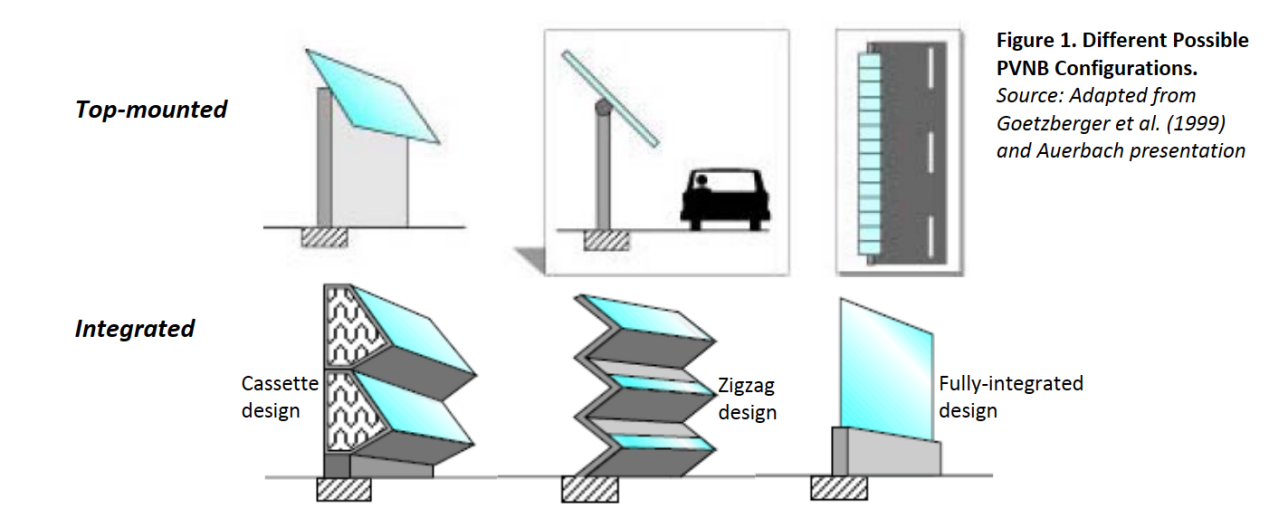
Figure 1. Different Possible PVNB Configurations. [4]
Solar photovoltaic panels will also impose light pollution to the nearby environment since the panels will reflect and refract sunlight and the rays will pass through windows and get into people’s vision, especially where large number of panels are put into use. During the design of solar panels, insufficient spacing between panel components can lead to reflection and scattering of sunlight. Especially during installation, if the panels are not placed properly, the reflected light will mirror the buildings and roads, creating a fish-eye effect. One possible solution to this problem is planting trees.[5] Trees have the function of absorbing reflected and refracted light, which will promote the reduction of light pollution caused by the installation of solar photovoltaic panels. However, since the solar power plants have a large floor area, the budget is tight if people plant trees around the power station. Although the trees can absorb light pollution, it will also hinder the absorption of sunlight of the panels and lower the efficiency, not to mention the extra cost and time to maintain the trees. Therefore, how to choose the most effective place to plant trees is a problem need to be solved.
3. Embracing the Epoch of Electric Vehicles
Generally, inspite of those drawbacks, the application of solar photovoltaic (PV) to charge electric vehicle (EV) is an prominent and promising utilization to alter the conventional cars equipped with internal combustion system which is dependant on fossil fuels.
3.1. The background: Environmental Concerning
A review related to the environmental concerning found that there is an increasing number of internal-combustion vehicles which consume unrenewable conventional fuels and it has caused both energy and environmental issues. The poisonous substances emitted by the vehicles occupied around 60% of the total emissions of the industry. The total consumption of energy for vehicles takes up 30% and 27% of greenhouse gas is emitted on the basis of survey. The problem of gas driven internal combustion engines with the greater expenditure of fossil fuels for transport that influence the global contamination [6]. All over the world, there has been a revolution in adopting RE sources instead of conventional fossil-fuel-based energy sources, as fossil fuels are touted as one of the main contributors of greenhouse gas (GHG) emission and global warming [7]. Emphasis has been placed on reducing the emission of greenhouse gas. According to the goal of reduction for emission of GHG, most of the countries considered the RE target as the compensation for the production of greenhouse gas from fossil-fuel-driven cars. Therefore, it is urgent to propagate and implement electric vehicles regarded as one of the energy efficient and environmental friendly transports
3.2. The Development of EV
Xiaoli Sun et al’s review sheds light on the evolution of electric vehicles in the world and the influence they have made. [8] The existence of electric vehicles (EV) have lasted for over 100 years since the advent of industrial revolution. Thomas Parker in 1884 made the EV possible and practical. Another fabulous example in early years was Ferdinand Porsche’s electric car manufactured in Germany in 1889. In recent years, electric vehicles succeeded in seizing the opportunities with the demand in renewable energy resource and drew much attention on market. The total number of EV on road in different countries was demonstrated below.
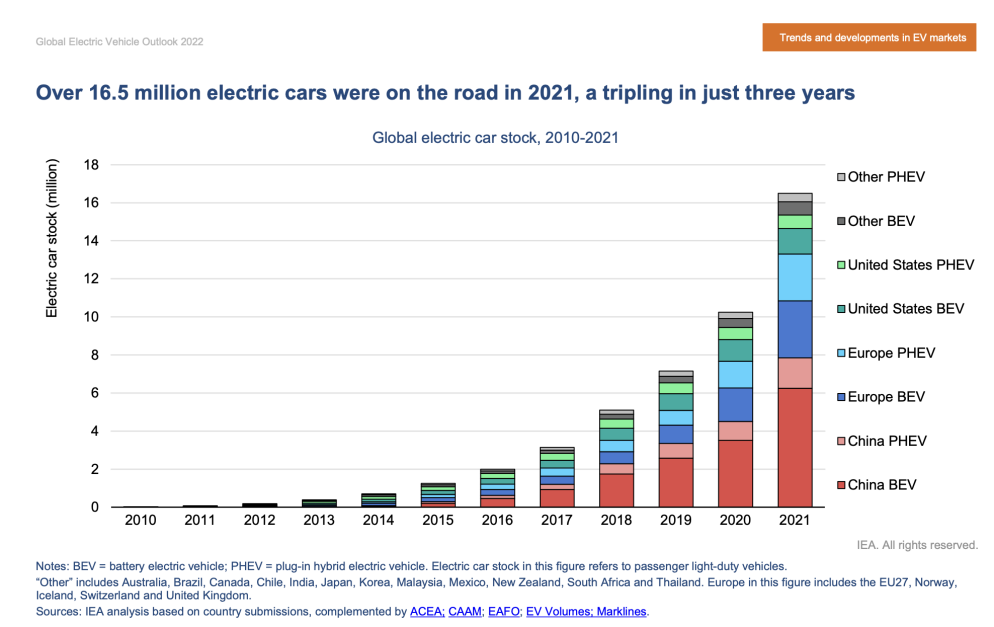
Figure 2. Global electric car stock
3.3. The Impact of combination of EV with solar PV
EV is forecast to be a significant part in electric vehicles attribute to its environmental-friendly features. And solar is advocated to be the major source of electricity in coming years thanks to the soaring improvement of relevant technologies and the reducing expenditure in solar PV panels [7]. And the graph below illustrates the worldwide growth of solar installations, which indicates that the solar energy will occupy a large amount in market.
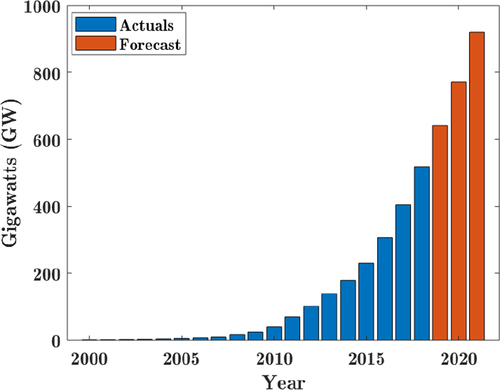
Figure 3. Global growth in solar installations [9]
Conventional grid is unstable which cause many blackouts recently. Consequently, the stability is of great importance. With advent of charging from grid which is non-linear and it is different from the usual one. EV is possible to impose a heavy burden on power supplying system due to the unstable charging period, speed and such these safety concerns. Conventional solar PV system consists PV panels, a DC/DC converter, DC/AC converter, a filter and control blocks.[10] The overview structure of PV system is displayed in the diagram below.
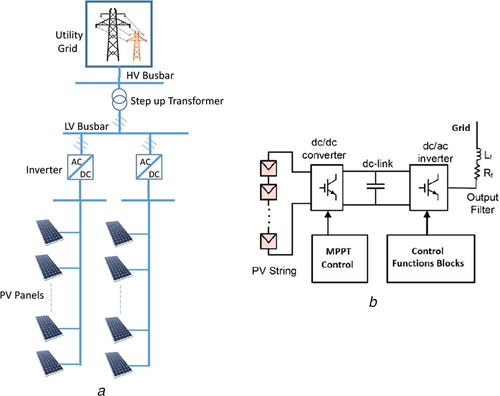
Figure 4. Structure of (a) PV system connected to grid, (b) PV control[11]
Recently, there has been a few developments of the grid codes which is aim to improve the stability of system for integrating PV in a few countries. Including South Africa, China, Germany, and the US. The differences and comparisons indicated by authors are in [12-17]. The high penetration of PV can significantly change the system stability because of characteristics of irradiance. Thus, there is a combination of EV and solar PV. they are both connected to the power network and on the basis of their connection and operating time. There are varieties of conjugations to integrate EV and PV into the grid, and it is dependent on the voltage level of the connecting point. [7] But individually EVs and PV can detriment the stability. This is mainly due to the intermittent nature of PV energy and the uncertain load characteristics of EVs due to unpredictable EV connection point, time, rate and period of EV charging. However, when they are coordinated properly, they can be used to improve stability. Pahasa and Ngamroo take the EVs charging and discharging and SoC control into consideration to improve the frequency stability of AC microgrid, including PV system ia a multiple model predictive control.[18] Meanwhile, Pham et al. [19] explore further by considering EVs as primary and secondary controllers to hold the frequency stabilization of system via a dynamic output feedback controller with multiple time delays in the control input. Subsequently, the results indicate the feasibility of combination of EVs and PVs.
Such this pattern will also bring economic benefits. With higher popularity and penetration in market, With advent of fast charging speed provided by PV, the usual grid will not afford the burden imposed by massive EVs anymore. Moreover, the cost in conventional energy resource will be lighten, which means the carbon tax will be reduced or even canceled since these PV stations and integrated grids are replaceable and alternative choices.
To sum up, integration of EV and PV can be regarded as environmental-friendly and it can bring enormous economic benefits in commercial application. But the problems such as the inconsistent and unreasonable relationship between the charging speed and safety. EVs and PVs has not been totally adopted by people. Instead, there are many utilization of solar PV in other areas.
4. Integration of Solar Energy in Homes
4.1. Introduction
As renewable energy has gained popularity throughout the past decades, solar photovoltaic energy has also earned its spot as one of the most innovative and successful renewable energies thus far. However, while utility-scale solar energy in power stations and commercial systems proves to be effective in yielding large amounts of energy, integrating Solar Photovoltaic energy into residential homes on a larger scale may bring a monumental leap toward more sustainable and energy-efficient living. Nowadays, many residential homes have already been equipped with solar energy-based technology, and with more integration of such systems, we will soon be able to achieve the promising prospects solar energy brings.
4.2. Working Principles of a Solar Panel
To fully understand the integration of solar PV modules into homes, it is essential to understand the working principles behind a solar PV panel. In all solar PV systems, the photovoltaic effect converts sunlight directly to electricity, while utilizing semiconductors like silicon to generate voltage and current [20]. When multiple solar cells - devices that harness solar energy through the photovoltaic effect to generate electricity - are assembled onto a metal frame, a solar panel is formed. While the solar panel receives photons and converts them to current, it is yet to be power available for direct use. When direct current (DC) flows through the panel’s circuit, it is converted to alternating current (AC) through an inverter, which allows it to be used for household appliances and even sent back to the grid. A battery is also attached so output can be stored, while a solar tracking system is installed for managing the system and increasing efficiency. Except for the two fundamental parts, other accessories may vary in size depending on the purpose of the solar panel, ranging from roof-mounted solar panels to large arrays of solar panels for commercial use.
4.3. Off-grid Solar PV Systems
Off-grid Solar PV systems are when residential facilities are not connected to any electric utility, generating and storing the power to run the home’s appliances by itself. Thus, this system is also commonly known as the Stand Alone PV System. Because of how off-grid systems generates electricity sufficient for households, they are often installed for the electrification of smaller communities without creating waste and contributing to climate change [21]. Thus, many refer to off-grid solar PV systems as an independent, and renewable way of living.
Another reason they are used is because of how they are viable for households in remote areas of the countries, or have little access to electricity depending on the demographics. These systems are especially appealing to Sub-Saharan countries, where an abundant amount of solar radiation is present.
However, Off-grid Solar PV systems are also accompanied by several limitations. Off-grid Solar PV systems are often associated with high start-up costs. One of the most essential parts for an Off-grid Solar PV system are the batteries, which may bring significant costs from the installation and the maintenance. Moreover, another critical factor is the system’s inconsistency caused by changes in weather. Given a few days of cloudy weather, the system’s limited battery may soon cause the household to run out of stored electricity. Though the system might not be as reliable as other sources in the present day, it still holds a bright future with further development.
4.4. Off-grid Solar PV Systems in Nigeria
Nigeria, with the demographic size of around 190.9 million people, could only supply electricity sufficient for around 50% of the country’s population despite utilizing fossil fuels and renewable energy to stimulate power supply.
While grid-tied solar PV systems have been widely used in Nigeria, many question whether off-grid solar PV systems can reach the same levels of efficiency. In 2020, a case study was done in Jos, Nigeria, a location which has appreciable amounts of solar radiations throughout the year, analyzing the techno-economic validity of off-grid systems. The data from the case study suggests that the system can generate approximately 5478 kWh as well as support the residential building electricity consumption of 3132 kWh approximately [22]. This indicates that while being self-sufficient, residential buildings with off-grid systems can even sell electricity back to the grid if certain installations are made. Overall, the results suggest that the implementation of off-grid PV systems for power generation at residential buildings being highly significant.
4.5. Grid-tied Solar PV Systems
Grid-tied Solar PV Systems are electricity generation systems that is linked to an electrical utility [21]. Similar to an off-grid Solar PV system, it may also independently provide electricity for a household to use, but also allows a more flexible usage. One of its key features is while being able to buy electricity from the grid during shortages, a grid-tied Solar PV system also allows the household to sell electricity back to the grid in surpluses. Although solar power systems require an upfront investment for their installation, they otherwise operate at very low costs. In short, installations of such systems have low upfront costs and offer high bill savings for homes. In comparison with off-grid solar PV systems, there are also no needs for investments for batteries and costs associated with maintenance and replacements.
Although solar power systems require an upfront investment that many do not wish to pay, its effectiveness is one of the most established among all renewable energies. Thus, governments have also started taking action in incentivizing grid-tied Solar PV systems. Generally, governments encourage the adoption of these systems by grants, tax credits, tariffs and more either while installing these systems or while selling excess energy. In the United States on August 2022, Congress passed an extension of the ITC, which brought tax credits for the installations of solar power systems up to 30% [23]. Such incentives by governments help offset the initial investments many are unwilling to pay, and may help solar photovoltaic systems become one of the most widespread energies soon.
Solar energy has immense future prospects due to its potential for sustainability and energy supply. Thus, with further development, the future of solar photovoltaic energy in homes stays bright.
5. Thoughts about the Recycling of the Renewable Solar PV Panels
At present, the global energy shortage, the dwindling stock of non-renewable resources has become a consensus. Efforts to develop renewable energy and constantly develop new energy have become the primary problem for governments. Solar photovoltaic, as an important technology to convert solar energy into electricity, has become an important renewable energy technology recognized in the world after years of development. With the continuous strengthening of people’s awareness of environmental protection, solar photovoltaic power generation panels as a green clean energy have been more and more widely used. However, as the life of solar photovoltaic power generation panels gradually ends, how to recycle them has become an urgent problem that needs to be solved. Solar photovoltaic power generation panels are composed of a large number of materials, including glass, metal, plastic, silicon and so on. These materials will cause certain environmental pollution and resource waste in the process of production and use. Therefore, the recycling of solar photovoltaic power generation panels can not only reduce the environmental burden, but also achieve the reuse of resources and achieve the goal of sustainable development. The recycling of photovoltaic modules can save resources, reduce the exploitation of primary resources and reduce the energy consumption of resource extraction, thus reducing the impact and damage to the ecological environment. Therefore, the recycling and harmless treatment of photovoltaic modules is a very close concern of the current international industry and the environmental community. At present, the recycling of solar photovoltaic power generation panels is mainly divided into two ways: physical recycling and chemical recycling. Physical recycling is mainly to disassemble solar photovoltaic panels, and recycle the glass, metal, silicon and other materials respectively. This method is relatively simple and easy to operate, but the recovery rate is low, and may cause some pollution to the environment. Chemical recycling is the chemical treatment of solar photovoltaic panels to separate out the silicon and other useful materials in them and then reuse them. This method has a high recovery rate, but it is difficult to operate and requires technology and equipment. Chemical photovoltaic module recovery methods are mainly divided into organic acid dissolution method and heat treatment method. The heat treatment method is divided into fixed vessel heat treatment method and fluidized bed reactor thermal treatment method. Because of the advantages and disadvantages of these methods, most recycling enterprises currently use organic acid dissolution method and heat treatment method combined use. The further back in the recycling process, the higher the technical requirements, the less waste, and the higher the theoretical benefits. According to the latest provisions of the EU WEEE Act, the recovery rate of component materials should reach 75%, and the reuse rate should reach 65%. This means that the relevant enterprises in the product registration and undertake the collection of waste components at the same time, but also to ensure the recycling of photovoltaic module products. According to the International Renewable Energy Agency, the International Energy Agency Photovoltaic Systems Project report, in 2014, the waste of photovoltaic modules is less than one thousand percent of electronic waste; By 2050, it will reach 78 million tons, and the global commercial goods market will be worth $15 billion.[24] Dr. Gavin Heath, one of the authors of the report and the National Renewable Energy Laboratory in the United States, told the media: “The amount of photovoltaic module waste will increase significantly in the near future, so we recommend that countries start preparing now.”
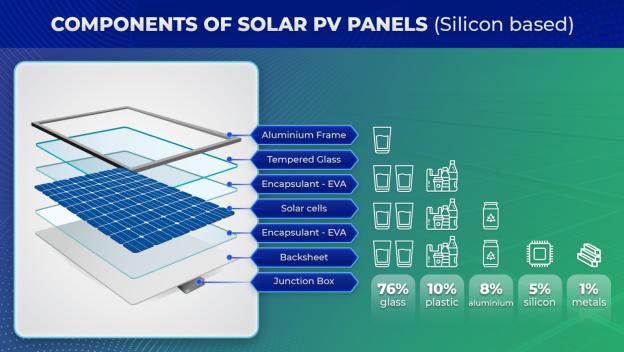
Figure 5. Solar Photovoltaic (PV) Panels – Rooftop, Recycle, Repeat Jun 28, 2021
Solar energy is a very stable energy source. In today’s energy shortage, solar energy brings hope to people. People can achieve sustainable use of energy through photovoltaic power generation and improve production and life. The photovoltaic industry is an industrial chain including different manufacturing departments with the core of comprehensive utilization of solar energy, which not only consumes energy but also produces energy. The energy generated by photovoltaic power generation applications is far greater than the energy consumed from the extraction of silicon materials to the production of photovoltaic modules. It is generally believed that the service life of a photovoltaic system is 25-30 years. In addition to the energy payback period of about 4 years required for the construction of the entire photovoltaic system, there is also a net energy production period of at least 21 years. With the development of technology and further improvement of production conditions, the energy consumption per ton of photovoltaic module production will decrease, while the further improvement of solar cell conversion rate and the extension of battery life will lead to new improvements in energy production efficiency. It is predicted that the global cumulative installed photovoltaic capacity is expected to reach 1,721GW by 2030, and will further increase to 4,670GW by 2050. The photovoltaic industry has huge development potential. It is estimated that the world’s newly installed capacity from 2018 to 2022 will be 101.91GW, 107.01GW, 125.20GW, 140.40GW and 157.80GW respectively. The demand for solar cell back sheets is estimated to be 6.1 million square meters per GW of installations. The corresponding demand for solar cell back sheets from 2018 to 2022 is 622 million square meters, 653 million square meters, 764 million square meters, 856 million square meters and 963 million square meters. In terms of pollutant emission reduction, the photovoltaic power generation system utilizes clean and pollution-free solar energy resources. Compared with traditional energy sources, it has obvious effects in reducing emissions of pollutants such as carbon dioxide, sulfur dioxide, and nitrogen oxides. Therefore, energy utilization with photovoltaic power generation as the core is of great significance for promoting the construction of a low-carbon economy and achieving the goal of energy conservation and emission reduction. With the improvement of relevant technological processes and technological progress, the energy-saving and emission-reduction effects of the development of the photovoltaic industry will further emerge.
6. Conclusion
As the energy demand rapidly increases across the globe, traditional energy sources like fossil fuels are becoming increasingly unsustainable in the long term despite their short-term benefits. The finite nature of these traditional energies has raised concerns about our energy supply in the future, thus, urging a search for alternative sources of energy. In this context, solar PV energy stands out as one of the most promising solutions as a renewable energy. Solar PV energy is one of the most environmentally friendly sources which produces electricity without releasing any harmful gases, and also serves as a renewable energy that will not deplete. Solar PV energy’s benefits are also not only limited to environmental benefits, it also presents a vast variety of benefits to users. In urban areas, solar panels allow users to gain more flexibility while using electricity in homes, and gain from accessories such as electric vehicles integrated with solar panels. Off-grid solar PV systems also play a crucial role in ensuring energy supply for households in rural areas. Though solar PV energy has presented several detrimental flaws in the past, including high startup costs, inefficient material usage, and inconsistency, solutions have emerged and people are still working to improve them more. Thus, with continued development and support from all stakeholders, photovoltaic energy has great potential to bring a more sustainable future for our world.
Acknowledgement
Weiqiong Wang, Yancheng Wang, Ho Tin Lu, and Qincong Tan contributed equally to this work and should be considered co-first authors.
References
[1]. Billenkamp E, Brandenberg O, Warmertam T, Method for processing industrial wastewater during the production of solar cells with a relative high portion of hydrogen fluoride and / or fluorides, comprises mixing soda lye or potash with wastewater in a pre-treatment zone. German, DE102008054142 - A1[P], 2011 - 05 - 12
[2]. Cucchiella, F., & D’Adamo, I. (2012). Estimation of the energetic and environmental impacts of a roof-mounted building-integrated photovoltaic systems. Renewable and Sustainable Energy Reviews, 16(7), 5245-5259.
[3]. Hosenuzzaman, M., Rahim, N. A., Selvaraj, J., Hasanuzzaman, M., Malek, A. A., & Nahar, A. (2015). Global prospects, progress, policies, and environmental impact of solar photovoltaic power generation. Renewable and sustainable energy reviews, 41, 284-297.
[4]. Poe, C., Plovnick, A., Hodges, T., Hastings, A., & Dresley, S. (2017). Highway renewable energy: photovoltaic noise barriers.
[5]. Guerin, T. (2017). A case study identifying and mitigating the environmental and community impacts from construction of a utility-scale solar photovoltaic power plant in eastern Australia. Solar Energy, 146, 94-104.
[6]. P.M. Sneha Angeline a, M. Newlin Rajkumar b, Research Scholar, Department of Computer Science Engineering, Anna University, Regional Campus, Coimbatore 641 046, India Assistant Professor, Department of Computer Science Engineering, Anna University, Regional Campus, Coimbatore 641 046, India (https://doi.org/10.1016/j.matpr.2020.06.266)
[7]. Tavakoli, A. , Saha, S. , Arif, M. T. , Haque, M. E. , Mendis, N. , & Oo, A. M. T. . (2020). Impacts of grid integration of solar pv and electric vehicle on grid stability, power quality and energy economics: a review. IET Energy Systems Integration, 2(3).
[8]. Sun, X. , Li, Z. , Wang, X. , & Li, C. . (2020). Technology development of electric vehicles: a review. Energies, 90.
[9]. Global Energy Vehicle Outlook, IEA www.iea.org/t&c/
[10]. ‘Globalwind solar installations in gigawatts (gw)’. Available at http://www.fipowerweb.com/Renewable-Energy.html, accessed: 2019–25–03
[11]. Liang X.: ‘Emerging power quality challenges due to integration of renewable energy sources ‘, IEEE Trans. Ind. Appl., 2017, 53, (2 ), pp. 855–866.
[12]. Honrubia-Escribano A. García-Sánchez T. Gómez-Lázaro E. et al.: ‘Power quality surveys of photovoltaic power plants: characterisation and analysis of grid-code requirements ‘, IET Renew. Power Gener., 2015, 9, (5), pp. 466–473.
[13]. Theologitis I.-T.K.: ‘ Comparison of existing PV models and possible integration under EU grid specifications ‘, 2011
[14]. Cabrera-Tobar A. Bullich-Massague E. Aragüés-Peñalba M. et al.: ‘Review of advanced grid requirements for the integration of large scale photovoltaic power plants in the transmission system ‘, Renew. Sustain. Energy Rev., 2016, 62, pp. 971–987
[15]. Mohseni M. Islam S.M.: ‘Review of international grid codes for wind power integration: diversity, technology and a case for global standard ‘, Renew. Sustain. Energy Rev., 2012, 16, (6), pp. 3876–3890
[16]. Gao D.W. Muljadi E. Tian T. et al.: ‘ Comparative analysis and considerations for PV interconnection standards in the united states and china ‘. National Renewable Energy Lab. (NREL ), Golden, CO (United States ), Tech. Rep., 2017
[17]. Gevorgian V. Booth S.: ‘ Review of prepa technical requirements for interconnecting wind and solar generation ‘. National Renewable Energy Lab. (NREL ), Golden, CO (United States ), Tech. Rep., 2013
[18]. Pahasa J. Ngamroo I.: ‘PHEVS bidirectional charging/discharging and SOC control for microgrid frequency stabilization using multiple MPC ‘, IEEE Trans. Smart Grid, 2015, 6, (2 ), pp. 526–533
[19]. Pham T.N. Nahavandi S. Trinh H. et al.: ‘Static output feedback frequency stabilization of time-delay power systems with coordinated electric vehicles state of charge control ‘, IEEE Trans. Power Syst., 2017, 32, (5 ), pp. 3862–3874
[20]. Akorede, M. F. (2022). Design and performance analysis of off-grid hybrid renewable energy systems. Hybrid Technologies for Power Generation, 35–68. https://doi.org/10.1016/b978-0-12-823793-9.00001-2
[21]. Khamisani, A. A. (2019). Design methodology of off-grid PV solar powered system (A case study of solar powered bus shelter). Goolincoln Avenue Charleston, IL: Eastern Illinois University.
[22]. Akinsipe, O. C., Moya, D., & Kaparaju, P. (2021). Design and economic analysis of off-grid solar PV system in Jos-Nigeria. Journal of Cleaner Production, 287, 125055. https://doi.org/10.1016/j.jclepro.2020.125055
[23]. Homeowner’s guide to the federal tax credit for solar photovoltaics. Energy.gov. (n.d.). https://www.energy.gov/eere/solar/homeowners-guide-federal-tax-credit-solar-photovoltaics
[24]. Directive 2012/19/EU of the European Parliament and of the Council of 4 July 2012 on waste electrical and electronic equipment (WEEE) (recast) Text with EEA relevance
Cite this article
Wang,W.;Wang,Y.;Lu,H.T.;Tan,Q. (2024). Commercial application in solar PV. Applied and Computational Engineering,84,62-71.
Data availability
The datasets used and/or analyzed during the current study will be available from the authors upon reasonable request.
Disclaimer/Publisher's Note
The statements, opinions and data contained in all publications are solely those of the individual author(s) and contributor(s) and not of EWA Publishing and/or the editor(s). EWA Publishing and/or the editor(s) disclaim responsibility for any injury to people or property resulting from any ideas, methods, instructions or products referred to in the content.
About volume
Volume title: Proceedings of the 4th International Conference on Materials Chemistry and Environmental Engineering
© 2024 by the author(s). Licensee EWA Publishing, Oxford, UK. This article is an open access article distributed under the terms and
conditions of the Creative Commons Attribution (CC BY) license. Authors who
publish this series agree to the following terms:
1. Authors retain copyright and grant the series right of first publication with the work simultaneously licensed under a Creative Commons
Attribution License that allows others to share the work with an acknowledgment of the work's authorship and initial publication in this
series.
2. Authors are able to enter into separate, additional contractual arrangements for the non-exclusive distribution of the series's published
version of the work (e.g., post it to an institutional repository or publish it in a book), with an acknowledgment of its initial
publication in this series.
3. Authors are permitted and encouraged to post their work online (e.g., in institutional repositories or on their website) prior to and
during the submission process, as it can lead to productive exchanges, as well as earlier and greater citation of published work (See
Open access policy for details).
References
[1]. Billenkamp E, Brandenberg O, Warmertam T, Method for processing industrial wastewater during the production of solar cells with a relative high portion of hydrogen fluoride and / or fluorides, comprises mixing soda lye or potash with wastewater in a pre-treatment zone. German, DE102008054142 - A1[P], 2011 - 05 - 12
[2]. Cucchiella, F., & D’Adamo, I. (2012). Estimation of the energetic and environmental impacts of a roof-mounted building-integrated photovoltaic systems. Renewable and Sustainable Energy Reviews, 16(7), 5245-5259.
[3]. Hosenuzzaman, M., Rahim, N. A., Selvaraj, J., Hasanuzzaman, M., Malek, A. A., & Nahar, A. (2015). Global prospects, progress, policies, and environmental impact of solar photovoltaic power generation. Renewable and sustainable energy reviews, 41, 284-297.
[4]. Poe, C., Plovnick, A., Hodges, T., Hastings, A., & Dresley, S. (2017). Highway renewable energy: photovoltaic noise barriers.
[5]. Guerin, T. (2017). A case study identifying and mitigating the environmental and community impacts from construction of a utility-scale solar photovoltaic power plant in eastern Australia. Solar Energy, 146, 94-104.
[6]. P.M. Sneha Angeline a, M. Newlin Rajkumar b, Research Scholar, Department of Computer Science Engineering, Anna University, Regional Campus, Coimbatore 641 046, India Assistant Professor, Department of Computer Science Engineering, Anna University, Regional Campus, Coimbatore 641 046, India (https://doi.org/10.1016/j.matpr.2020.06.266)
[7]. Tavakoli, A. , Saha, S. , Arif, M. T. , Haque, M. E. , Mendis, N. , & Oo, A. M. T. . (2020). Impacts of grid integration of solar pv and electric vehicle on grid stability, power quality and energy economics: a review. IET Energy Systems Integration, 2(3).
[8]. Sun, X. , Li, Z. , Wang, X. , & Li, C. . (2020). Technology development of electric vehicles: a review. Energies, 90.
[9]. Global Energy Vehicle Outlook, IEA www.iea.org/t&c/
[10]. ‘Globalwind solar installations in gigawatts (gw)’. Available at http://www.fipowerweb.com/Renewable-Energy.html, accessed: 2019–25–03
[11]. Liang X.: ‘Emerging power quality challenges due to integration of renewable energy sources ‘, IEEE Trans. Ind. Appl., 2017, 53, (2 ), pp. 855–866.
[12]. Honrubia-Escribano A. García-Sánchez T. Gómez-Lázaro E. et al.: ‘Power quality surveys of photovoltaic power plants: characterisation and analysis of grid-code requirements ‘, IET Renew. Power Gener., 2015, 9, (5), pp. 466–473.
[13]. Theologitis I.-T.K.: ‘ Comparison of existing PV models and possible integration under EU grid specifications ‘, 2011
[14]. Cabrera-Tobar A. Bullich-Massague E. Aragüés-Peñalba M. et al.: ‘Review of advanced grid requirements for the integration of large scale photovoltaic power plants in the transmission system ‘, Renew. Sustain. Energy Rev., 2016, 62, pp. 971–987
[15]. Mohseni M. Islam S.M.: ‘Review of international grid codes for wind power integration: diversity, technology and a case for global standard ‘, Renew. Sustain. Energy Rev., 2012, 16, (6), pp. 3876–3890
[16]. Gao D.W. Muljadi E. Tian T. et al.: ‘ Comparative analysis and considerations for PV interconnection standards in the united states and china ‘. National Renewable Energy Lab. (NREL ), Golden, CO (United States ), Tech. Rep., 2017
[17]. Gevorgian V. Booth S.: ‘ Review of prepa technical requirements for interconnecting wind and solar generation ‘. National Renewable Energy Lab. (NREL ), Golden, CO (United States ), Tech. Rep., 2013
[18]. Pahasa J. Ngamroo I.: ‘PHEVS bidirectional charging/discharging and SOC control for microgrid frequency stabilization using multiple MPC ‘, IEEE Trans. Smart Grid, 2015, 6, (2 ), pp. 526–533
[19]. Pham T.N. Nahavandi S. Trinh H. et al.: ‘Static output feedback frequency stabilization of time-delay power systems with coordinated electric vehicles state of charge control ‘, IEEE Trans. Power Syst., 2017, 32, (5 ), pp. 3862–3874
[20]. Akorede, M. F. (2022). Design and performance analysis of off-grid hybrid renewable energy systems. Hybrid Technologies for Power Generation, 35–68. https://doi.org/10.1016/b978-0-12-823793-9.00001-2
[21]. Khamisani, A. A. (2019). Design methodology of off-grid PV solar powered system (A case study of solar powered bus shelter). Goolincoln Avenue Charleston, IL: Eastern Illinois University.
[22]. Akinsipe, O. C., Moya, D., & Kaparaju, P. (2021). Design and economic analysis of off-grid solar PV system in Jos-Nigeria. Journal of Cleaner Production, 287, 125055. https://doi.org/10.1016/j.jclepro.2020.125055
[23]. Homeowner’s guide to the federal tax credit for solar photovoltaics. Energy.gov. (n.d.). https://www.energy.gov/eere/solar/homeowners-guide-federal-tax-credit-solar-photovoltaics
[24]. Directive 2012/19/EU of the European Parliament and of the Council of 4 July 2012 on waste electrical and electronic equipment (WEEE) (recast) Text with EEA relevance









